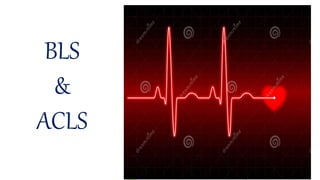The document provides guidance on high-quality CPR, use of an AED, pediatric resuscitation, ACLS protocols, management of acute coronary syndromes and stroke, and effective team dynamics during resuscitation attempts. It emphasizes the importance of starting compressions quickly, maintaining adequate rate and depth, minimizing interruptions, and giving effective breaths. It also outlines the primary and secondary assessments, H's and T's of ACLS, types of stroke, and "8 D's of stroke care." Regarding teams, it stresses clear roles, effective communication, mutual respect, and constructive feedback to optimize performance.


















































